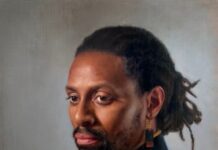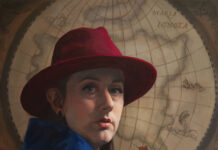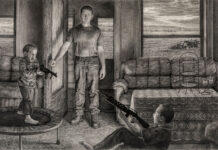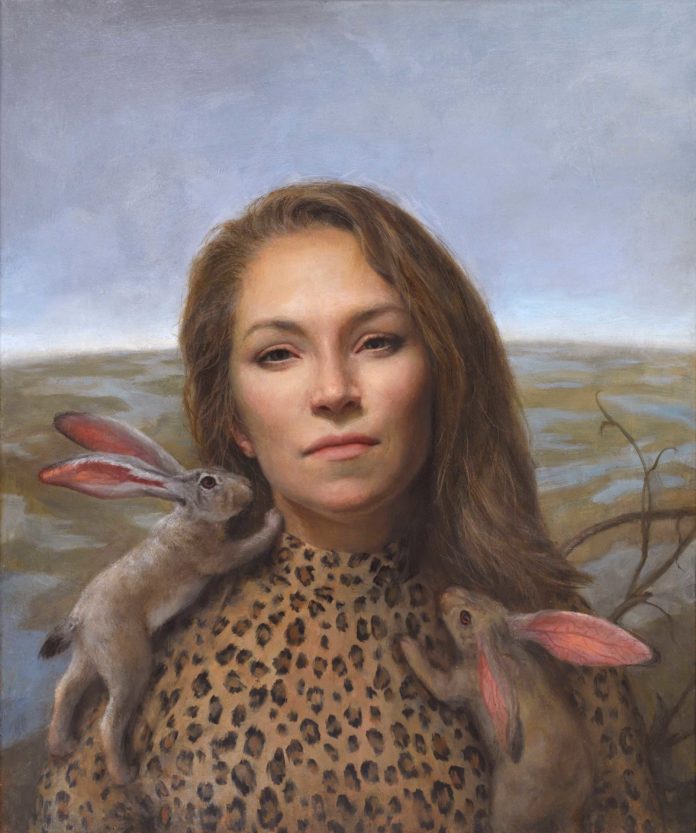
Kristy Gordon shares actions to take, clues to look for, her “miracles list,” and an artist questionnaire – all to help you find your artistic voice.
There is something unique and special inside all of us, something that no one else can offer the world. Our job is not to judge this gift, but to explore and share it.
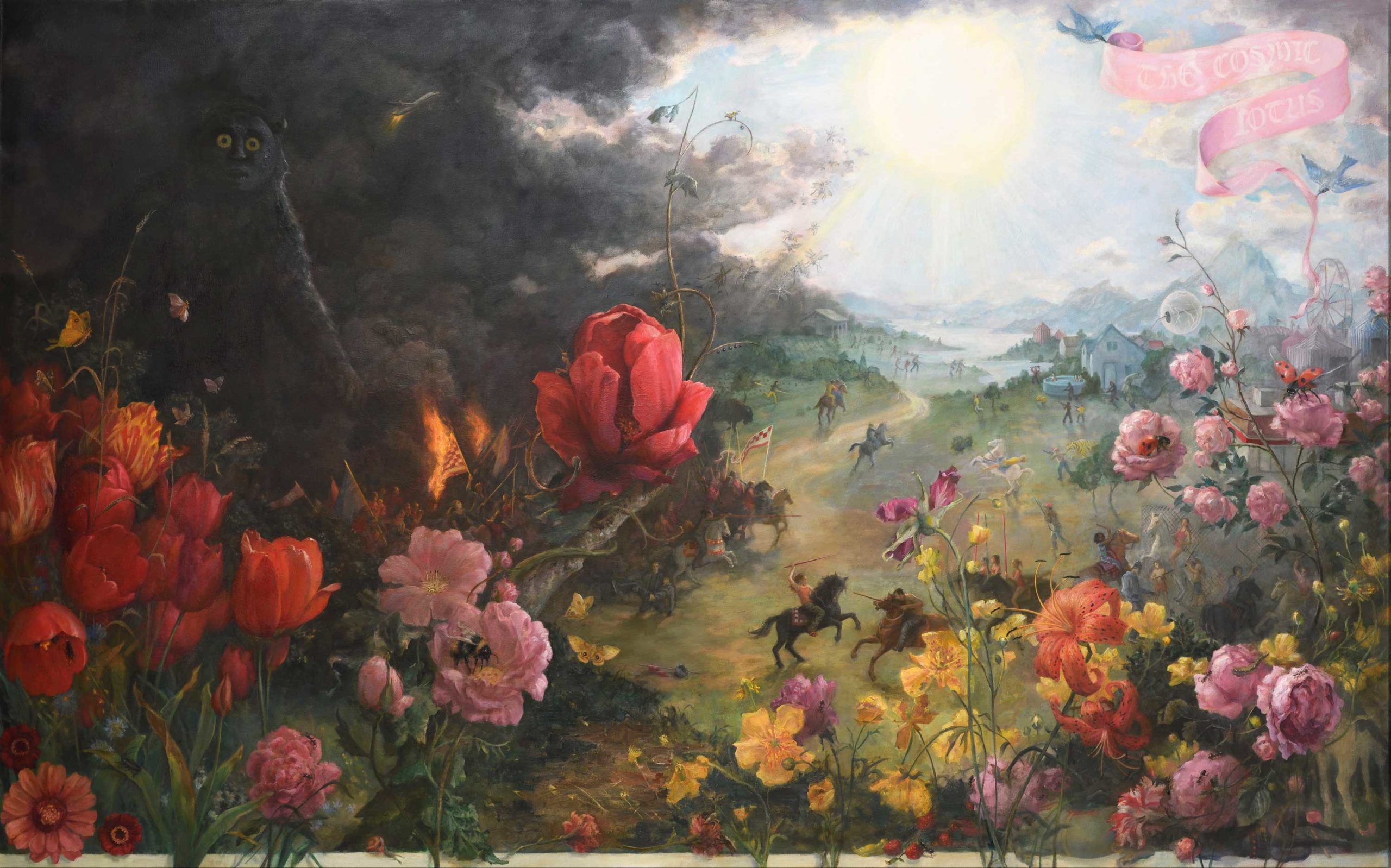
BY KRISTY GORDON
Since I first wrote this article in 2017 for Streamline Publishing, my painting style has evolved. At first when I was asked about republishing this piece, I wanted to hide the fact that my artistic style —that is, my voice— has changed so much. But then a friend pointed out that this might be a very important and helpful part of the artistic experience to illuminate. Our voice is constantly developing and changing in response to changes in ourselves and our time.
Writing this article has been humbling, because finding one’s voice is such a personal process. So while it’s impossible to write a definitive guide on how to find your artistic voice, I’ll share with you what I’ve learned. I truly believe these processes will help you unearth your unique creative expression, no matter how deeply it’s been buried.
What exactly do we mean when we talk about finding one’s voice? “Voice” can mean both “the distinct sound produced by a person’s larynx,” and “the agency to express something.” Our voice is distinct and recognizable, and also claims our right to stand up and make a proclamation to the world.
To find our artistic voice, we must give ourselves permission to listen to our inner voice and then do what our inner voice is telling us. Our artistic voice comes from the specific choices we make as artists. These choices give our work an individual style.
Your artistic voice is your soul signature. It brings together your personal experience, technical expertise, and epiphanies that come to you as you’re working. For me this means drawing inspiration from themes and imagery in my day-to-day life, utilizing my training, and during the creative process staying open for epiphanies. These come to me when I look at art from the past and have sudden inspirations about a way to resolve or improve a painting. It also comes in the form of intuitive nudges, curiosities about what would happen if I tried some idea or added a certain element, color, or pattern. When you know your voice you know yourself. Your voice is reliable and will guide you through the artistic decisions you have to make as you work. It’s also something that galleries and collectors love.
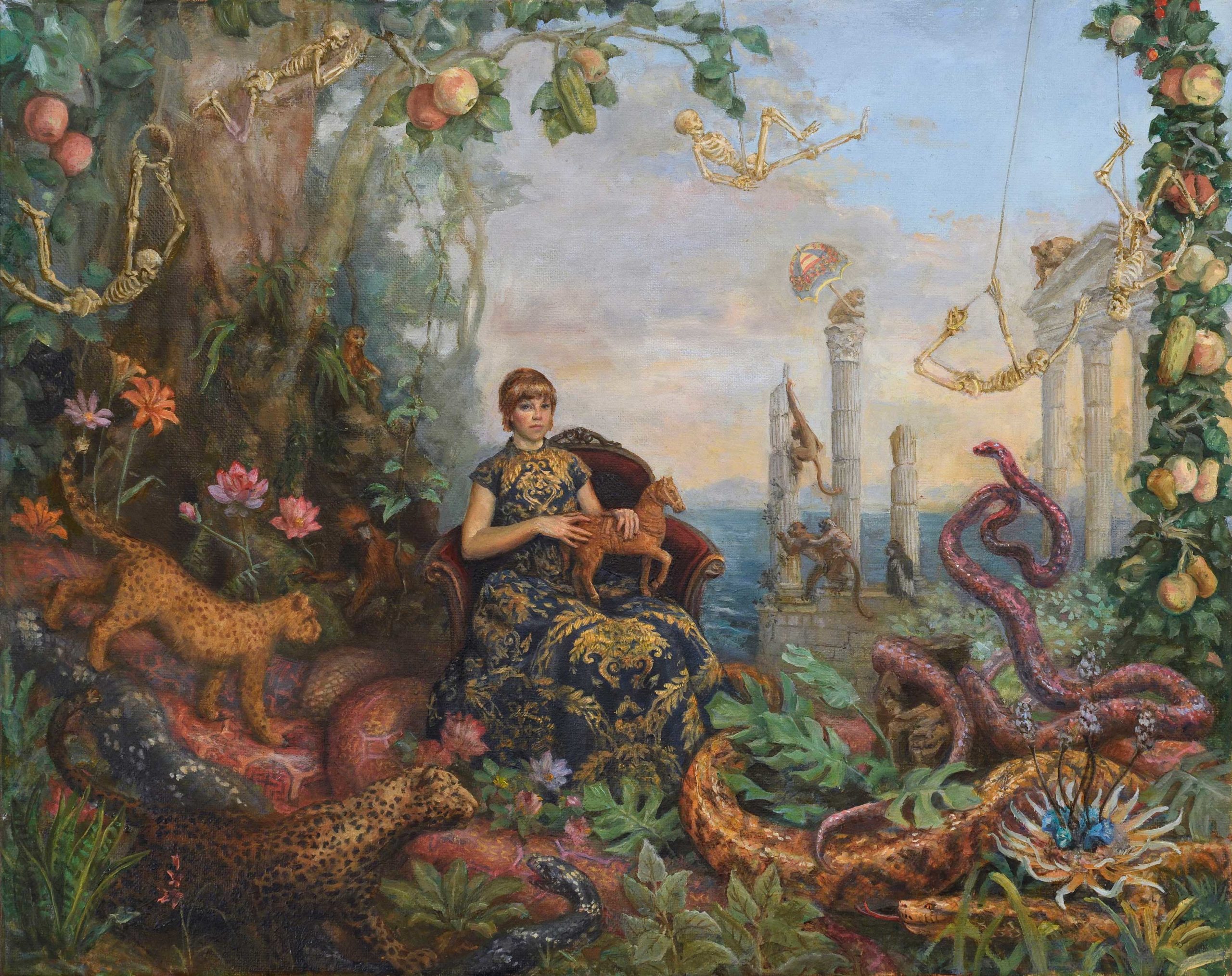
My Story
Like many, my experience of growing up and being socialized taught me to bury my voice. I ignored my feelings and intuition so I could feel like I fit in. Like many of the people who come to my classes and online art mentoring program, I went through a phase with my art, and my life, where I felt very inhibited.
I remember feeling artistically free and in the flow as a teenager. This love of art was fed with every kind of art education I desired, beginning with rigorous academic training. I loved this at the time and it was totally exciting at first. Eventually, though, the training became like a box. I went through my entire undergraduate and graduate degrees always preoccupied with painting “a good painting” and worried about what others would think.
After finishing my MFA at the New York Academy of Art I finally started experimenting. Free from the judgment of my peers and teachers, I made it safe for me to be vulnerable. I carved out some time to experiment freely by taking almost a year off from exhibiting current works. I still posted on Instagram almost daily, but I was creative about ways to post so as not expose anything that felt too raw. By giving myself space to create without judgment I had a chance to trust and validate my gut responses.
I only invited artists I trusted into my studio. These trusted colleagues “gave me permission” to break out even further. It was fun. We need other artists to reflect back to us, but you can be selective about who you invite over.
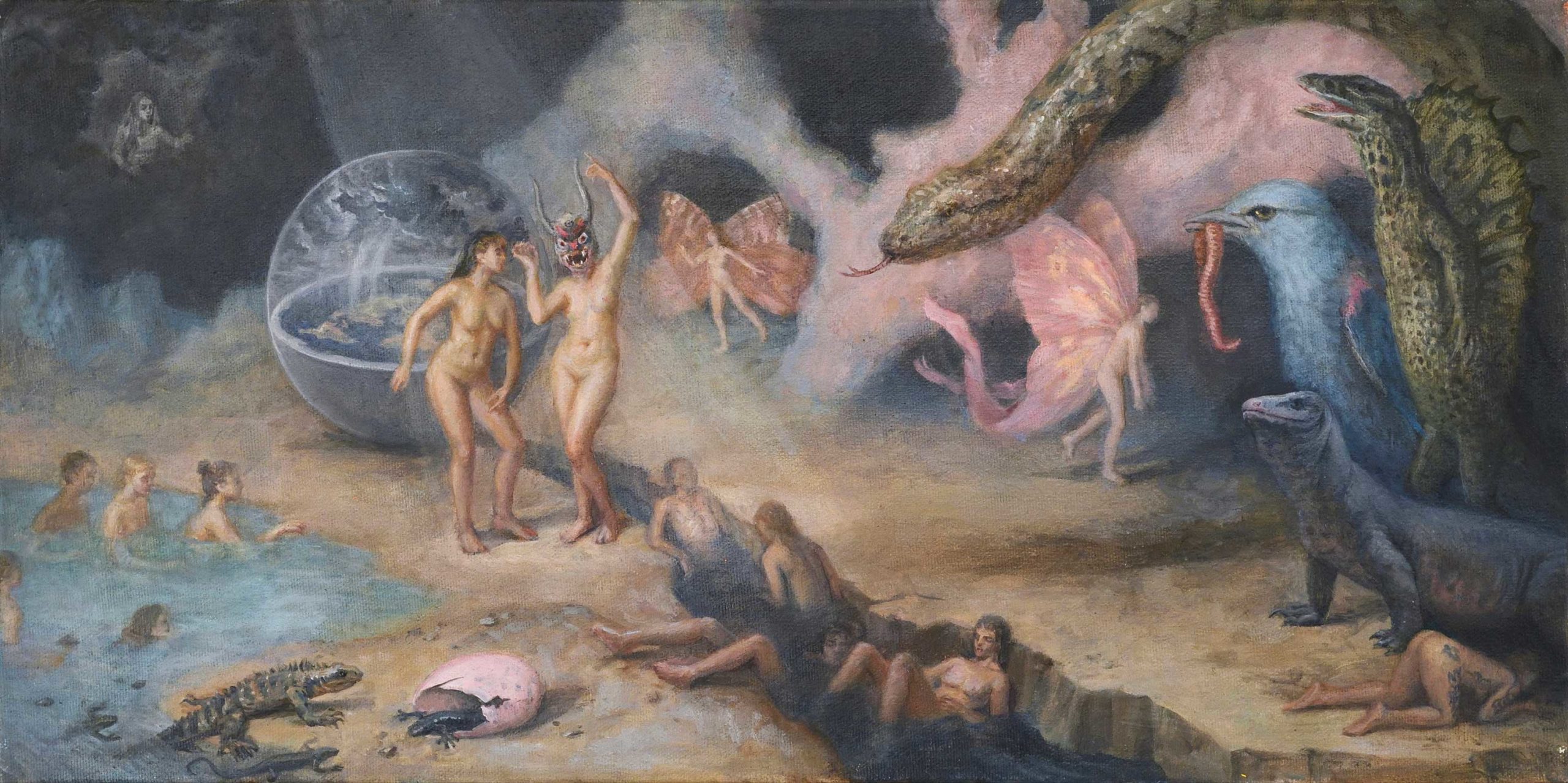
Looking at Other Artists
When I asked the amazing painter Enrique Martínez Celaya how to find one’s artistic voice he said, “Make a lot of work. Look at a lot of art in galleries and then paint a lot.” Otherwise, he said, we can get too theoretical. We work it all out in the studio by making a lot of work. It’s not copying if you gain inspiration from others.
Kiki Smith said that everyone is looking at someone, and the more obscure the art you’re looking at the more original your art will seem. Some painters I asked found that they hit a point where they had to put away images of other artists’ work and focus on their own art. My creativity is fed by looking at art by others and reading interviews with them or chatting with them in person. Each person is different, and each person may go through different phases. By learning to listen to your inner voice and intuition, you will know what you need most.
Weird Clues
I looked for clues to let me know when I was on track towards my artistic voice. I found clues listening to music that resonated with me, or music I liked as a teenager. You can look at the clothes in your closet—your artistic voice will probably look a bit like you. I have a friend with really bushy eyebrows and wild curly hair. He has this rough, sketchy, almost hairy, style of drawing. An attractive and well-groomed friend of mine has a style that is polished and smooth, with lots of rendering of muscles. It can be hard for us to know our true nature because we are so immersed in it. Fish can’t see the water they swim in. But we can use these clues as we excavate our own vibration and bring forth our artistic voice.
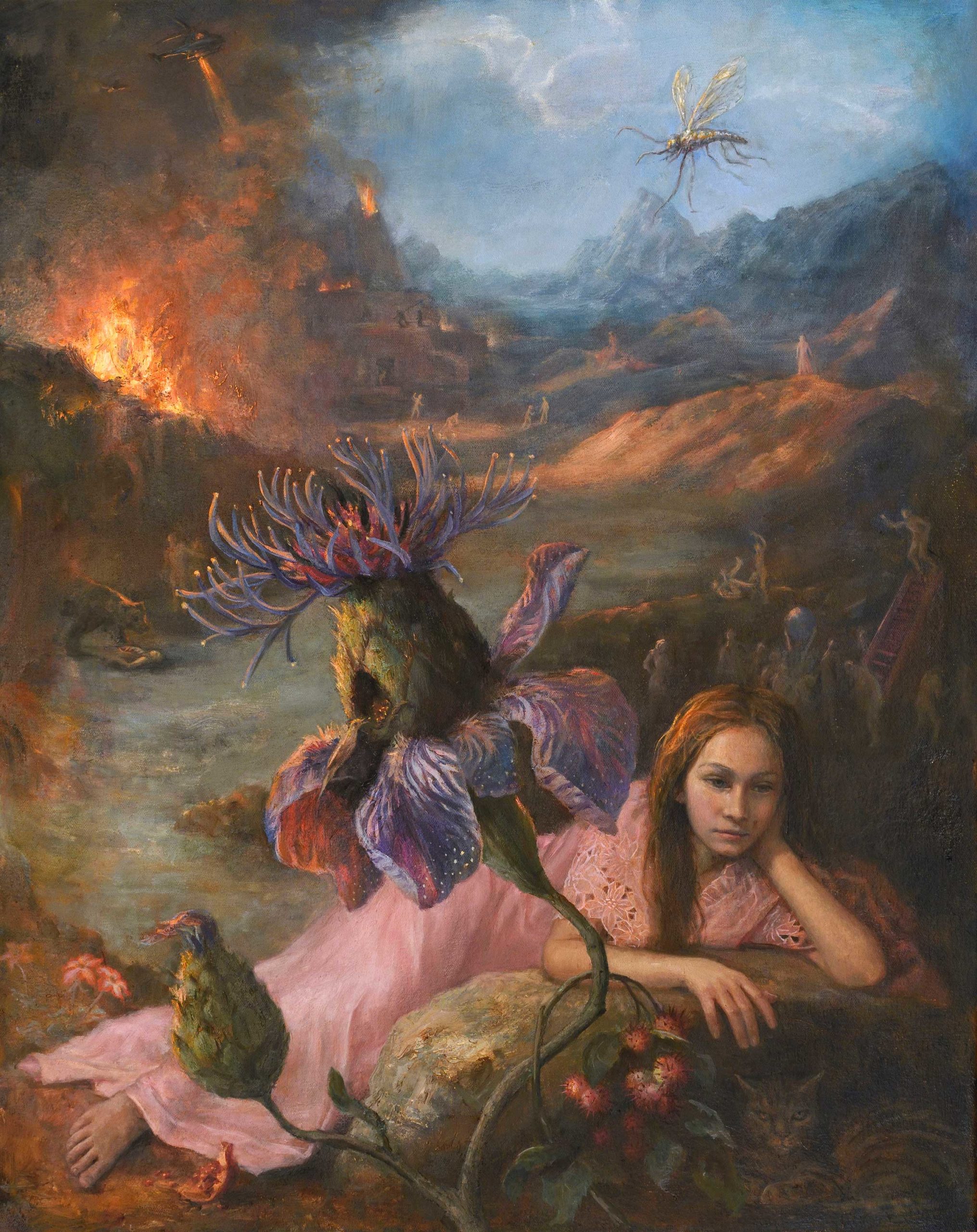
Processes
When I finally got a glimpse of my truth, I nurtured it so it would stay a little longer. How did I nurture my voice? The key is to be proactive. I used these processes to unearth what was deeply buried in me.
Goal Setting
There is power and magic in goal setting. By taking regular baby steps towards goals we’re announcing to the universe that we are ready, willing, and able to receive our desired result. Our dreams won’t just come true on their own; we have to be a participant in the process. Get clear about what your goals are, write them down, and then break them into smaller steps that you can take action on regularly.
Intuitive Painting
To get in touch with our buried authentic expression, we have to get in touch with our intuition. With this process our first thought is the best thought. It’s our gut response, our body knowledge. Our voice comes quickly, before we start over-thinking and talking ourselves out of our gut feelings. There is no right answer in art. So start by giving yourself the permission to follow your intuition.
In her book Painting the Landscape of Your Soul, Damini Celebre describes a process for intuitive painting that has set me free. Get some cheap paper and paints. (I got a big roll of crate paper and some fun acrylic paints for kids.) Then tune into yourself and do the first thing that comes to mind. Don’t shut it down. It doesn’t matter if you make a good painting or a terrible one. It’s just paint. Maybe you feel pulled to put down a purple wash. When that’s complete, check in with yourself and see what comes next. Continue to follow your first impulse until your gut tells you it’s complete. Do not judge the way it looks. This is super fun. I’ve started doing a quick intuitive painting every morning. It makes me happy all day.
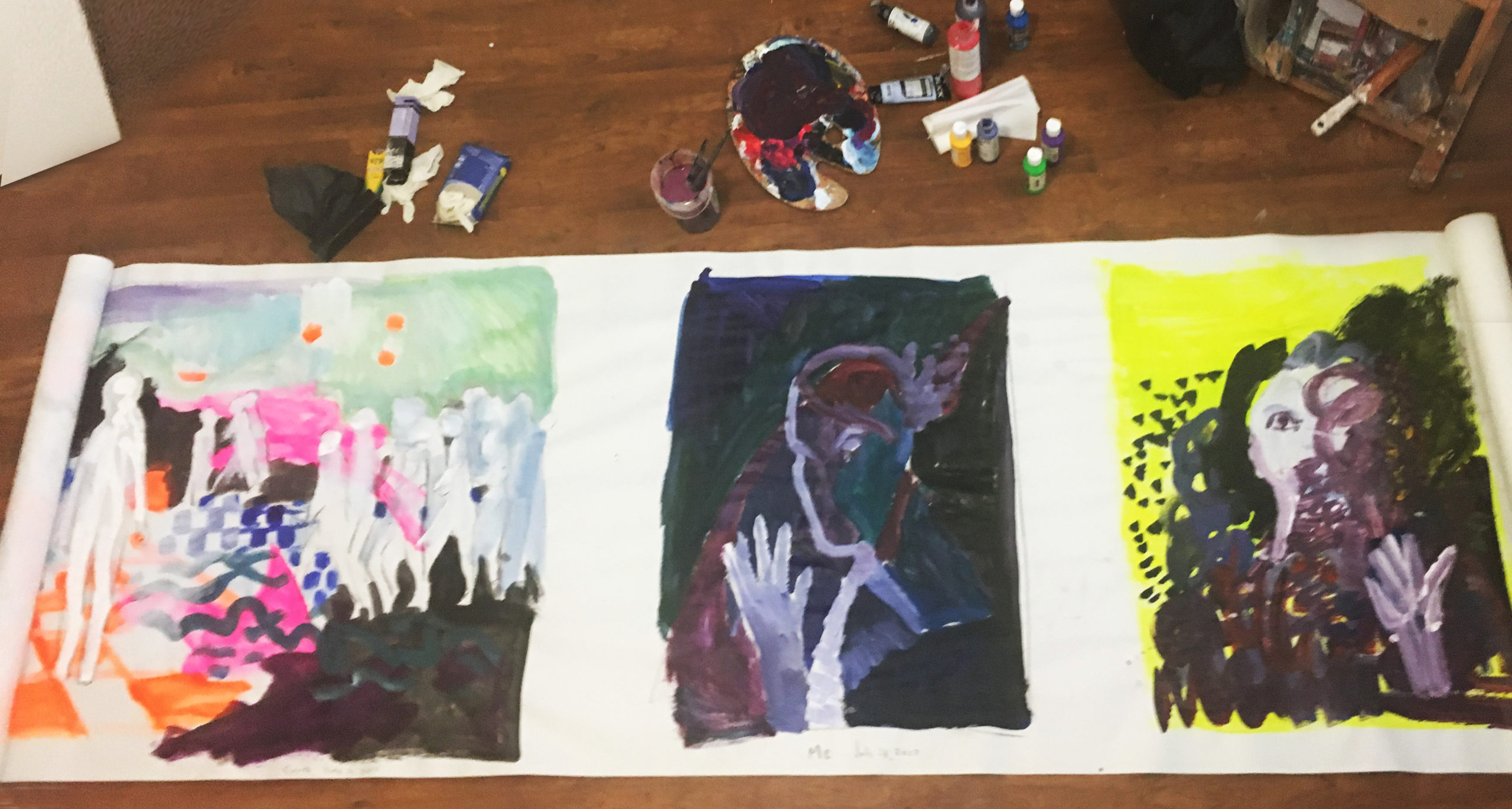
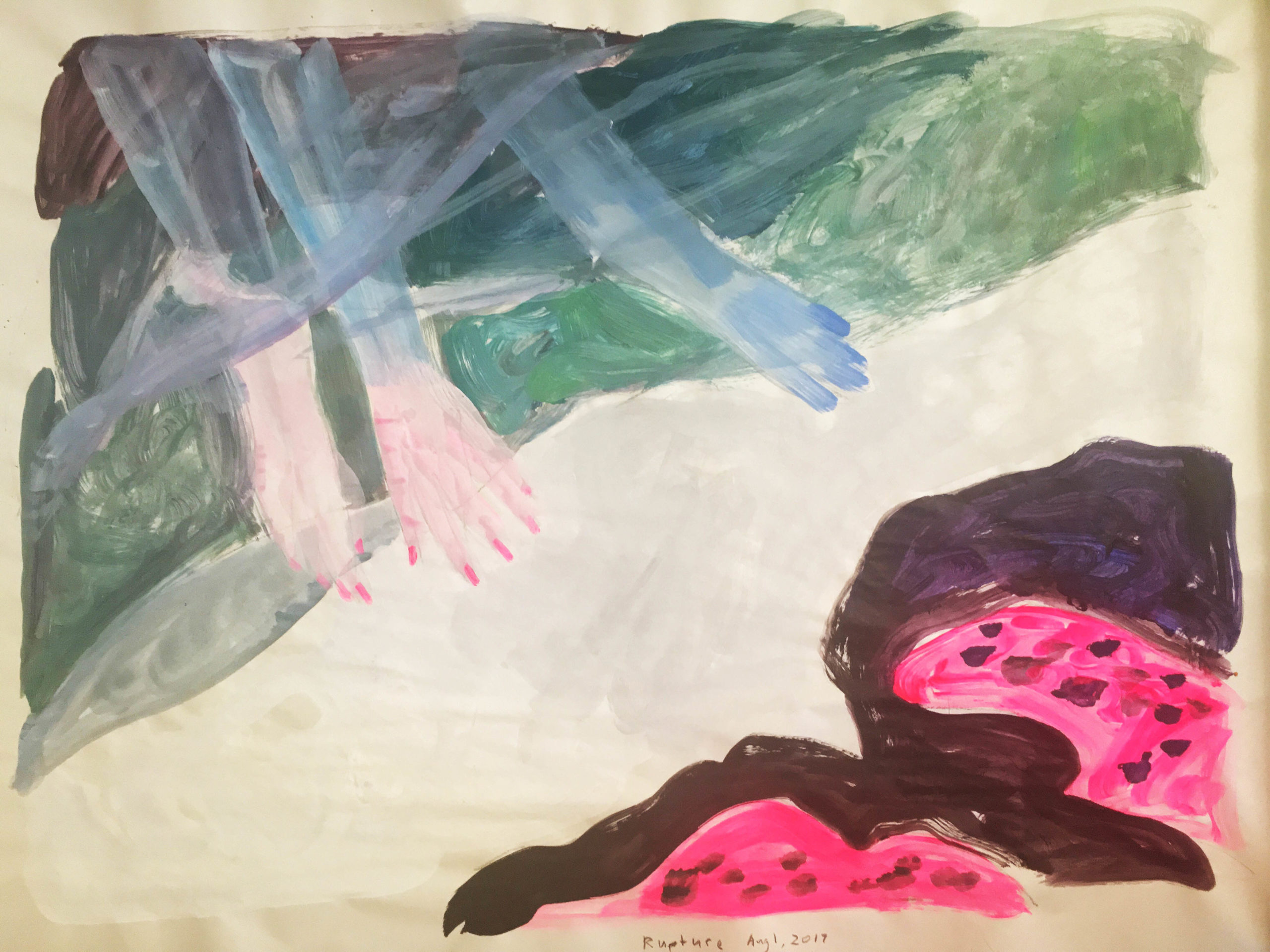
This powerful practice is restorative to our ability to hear our intuition and also opens up the creative juices to start. These paintings may not be the work you will show the world, but elements of what you play with in this creative free time may be incorporated into your finished work.
Actionable Practices to Help Find Your Artistic Voice:
1. You have to give it away to get it.
If we are too full nothing can enter, so give back what you’ve received from the universe. Form art circles to encourage, offer feedback (when asked for), and support each other. The more you give creative nurturing and support to other artists finding their voice the more it flows into and through you.
2. Make a list of daily miracle actions.
If we don’t nurture our creative genius it will leave us, but if we show it that we’re willing to work with it, we will receive more and more ideas and epiphanies. Think about what actions you can take to nurture your creativity daily. When in your life has creativity flowed through you? What daily practices were you doing then? Do that now. At the end of this article I’ll share with you “my miracles list” of things I do daily to really get the creative juices flowing.
3. Face the pains of your past.
Write about times when your creativity was hurt, your work was criticized or you were rejected. Really go deep into the feelings you had at the time, and anything else that was triggered by the event. Write out the story of your creativity from the beginning until now. Clean the slate; release the pain that blocks you.
4. Write three “morning pages.”
In her seminal book The Artist’s Way, Julia Cameron suggests writing three pages of free-flowing thought every morning. Don’t stop the pen, don’t try to sound good, don’t edit. It’s just pure flow. Alternatively you could start the day with an intuitive painting, not meant to be good at all, just meant to open up your creative channels. I do both daily and it is super powerful.
5. Stop being a perfectionist.
The antidote to fear is wonder. Replace your fear of being imperfect with a curiosity about what it will look like when you follow what interests you and listen to your gut.
6. Do what comes naturally.
Try everything, but in the end, your voice is probably going to be something that feels natural to you. As a kid my drawings were always sketchy and open edged, while my sister’s were more linear. I can still see these essential qualities in our respective work. My work often uses looser brushwork and my sister now does amazing cutout illustrations for magazines. Each is like an extension of what we did as children!
7. Give yourself permission. Freedom isn’t given, freedom is taken.
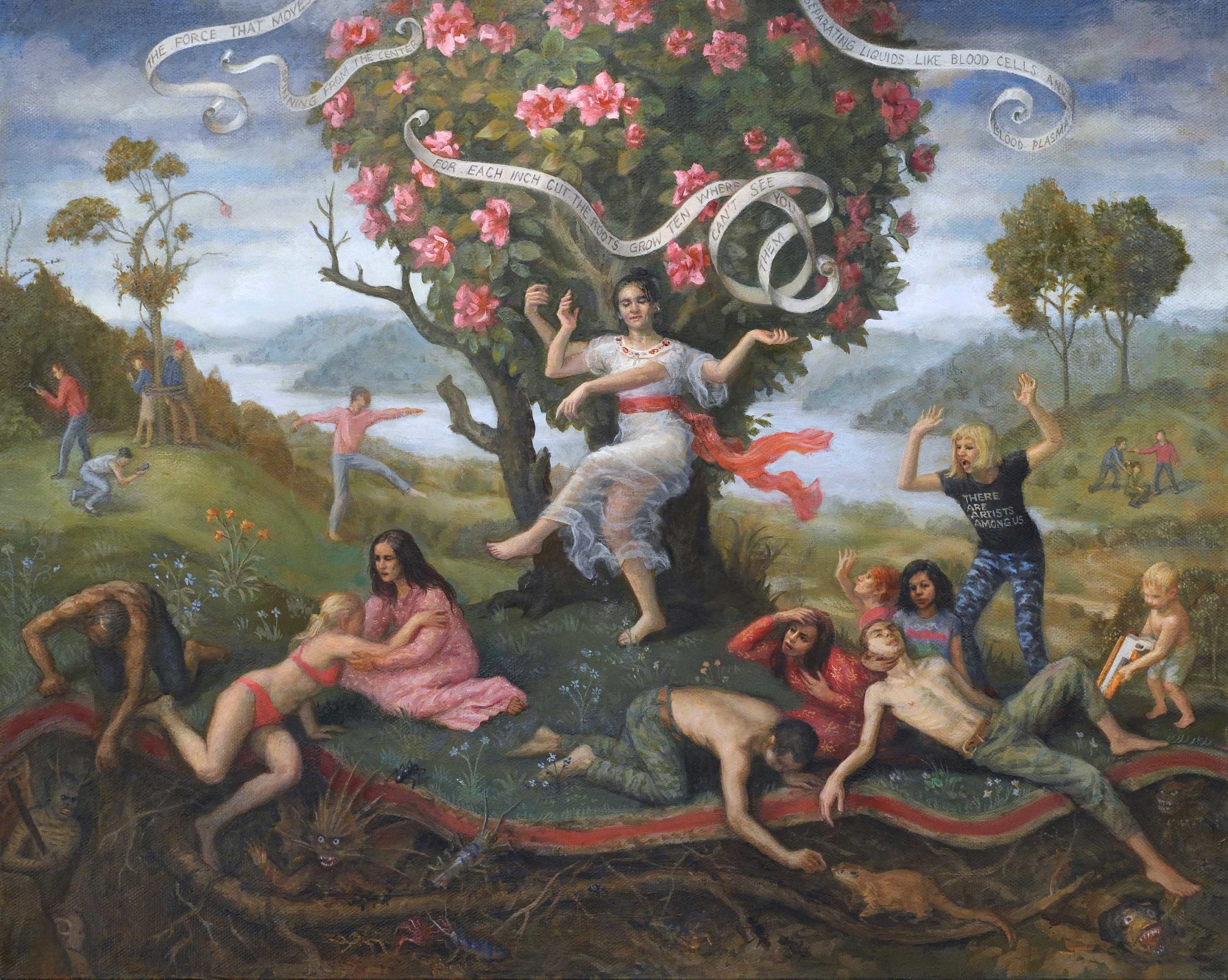
My Miracles List
1. Do one thumbnail daily. A “thumbnail” is a quick compositional sketch; it may take five to ten minutes to do and is the first step to working out a new idea.
2. Read one interview with an artist per day
3. Read about color theory or composition for half an hour a day
4. Paint for one hour a day minimum (*if that’s not possible paint for 25 minutes a day). This daily consistent action will build momentum and your creativity will start to flow.
5. Do morning pages daily.
6. I also have other daily goals that assist me indirectly by taking care of my general well-being, such as daily adequate rest, nourishment and exercise.
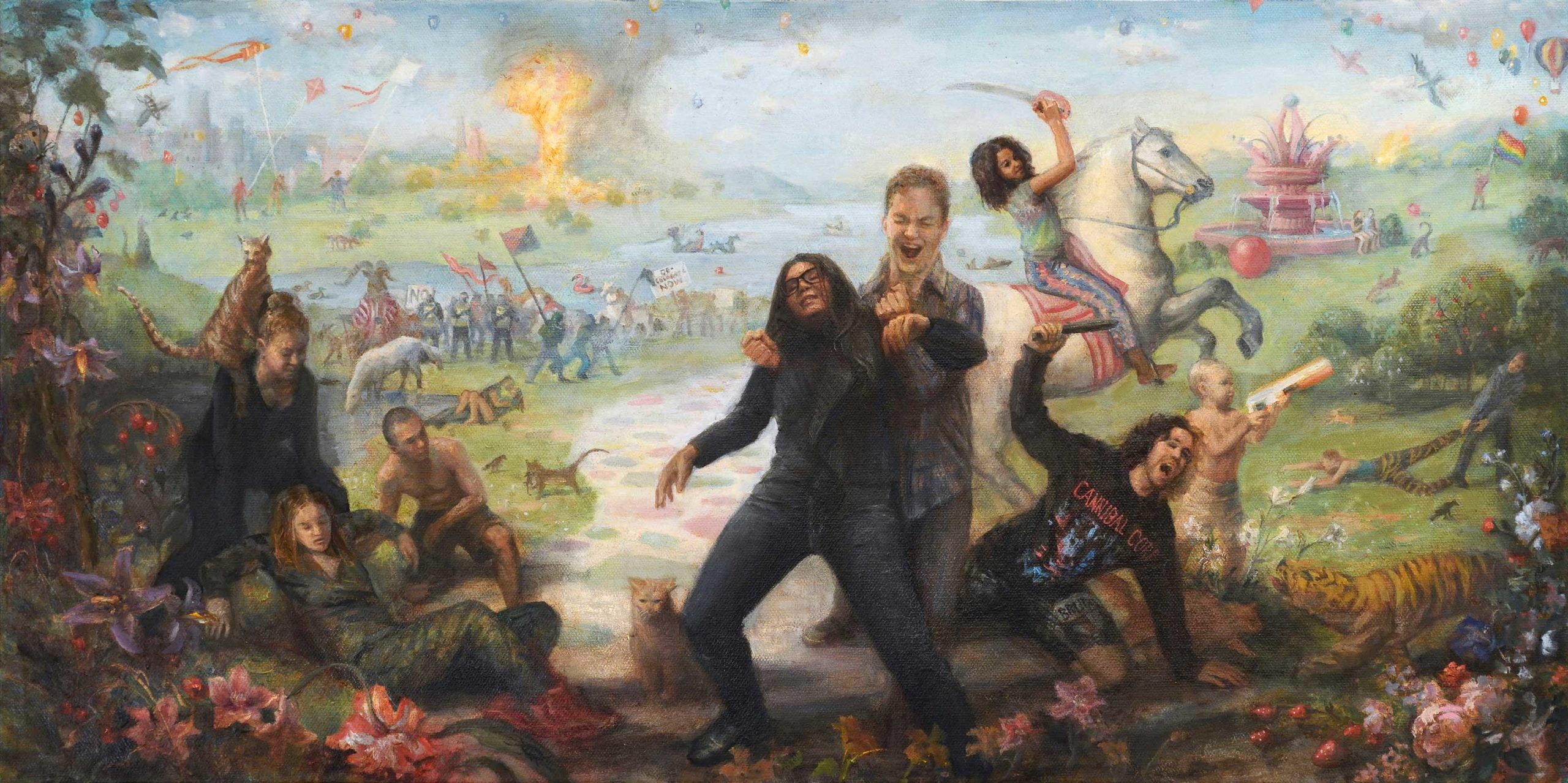
Questionnaire for Artists
Answer these questions with your first gut response. Then go back and go deeper. Why did you answer the way you did? Look for an epiphany, something surprising about your answers. This is your point of view. Your point of view is so prevalent it’s hard for you to see. To find your artistic voice, show me how you see the world.
• When and where were you happiest painting?
• Which living artist do you admire the most?
• What’s your all-time favorite painting?
• What do you hate seeing in others’ work?
• What is your favorite painting that you’ve ever done?
• What recurring themes and techniques do you see in your past work?
• What do you wish you would see in galleries that you don’t see–what’s missing?
• What is your first memory of painting?
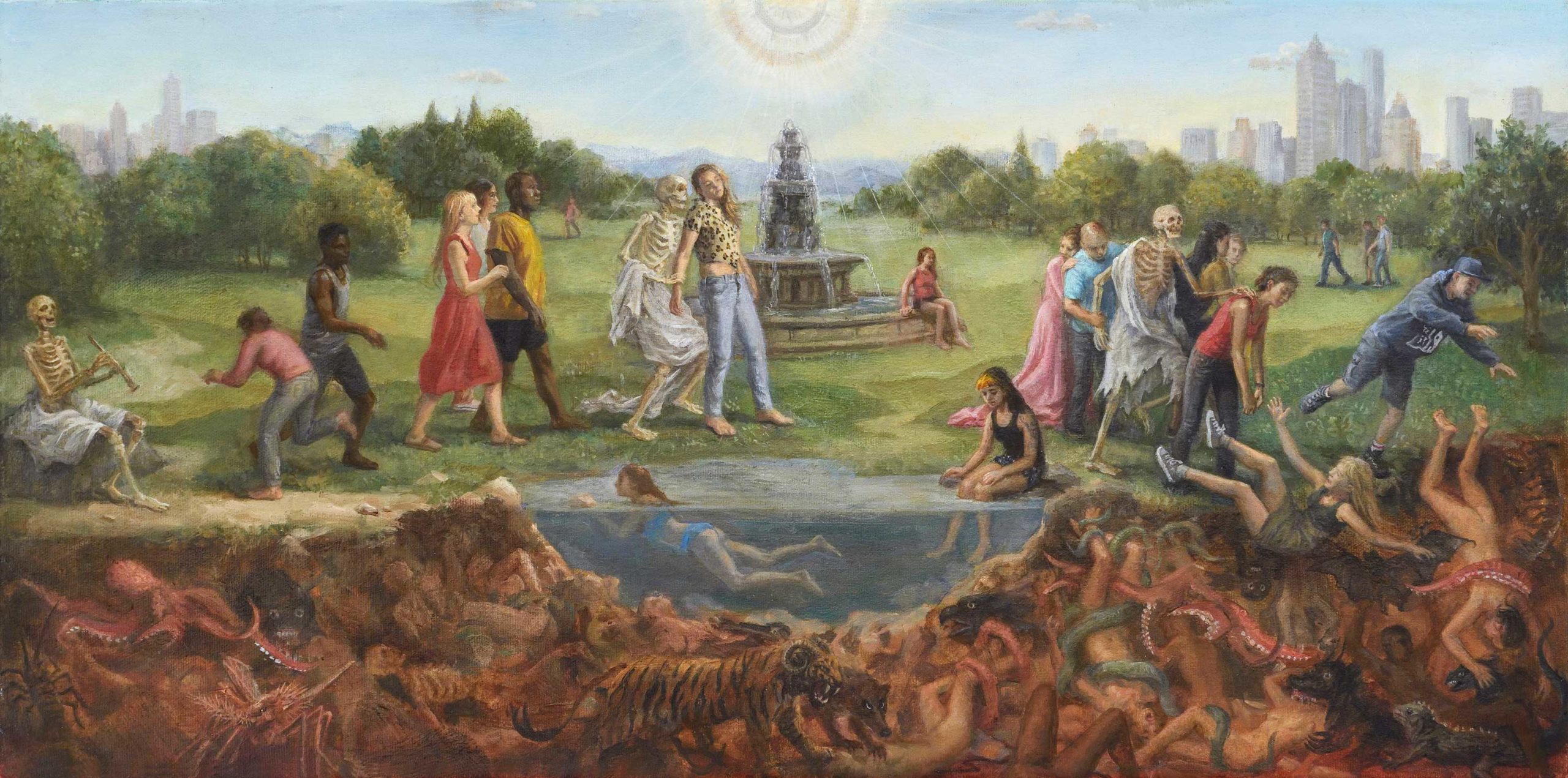
Conclusion
The challenges I face in painting are seldom technical issues, but rather the excavation of self in its evolving form within reality. By following your excitement with your paintings you will reconnect with your own unique vibration as an artist. It has been there since the beginning—it is who you are. It has been buried deep within your body, and can be unearthed by paying attention to clues, giving yourself permission to experiment, taking action, and following your intuition.
It can be hard to know where an idea will lead you. By exploring whatever interests you, your artistic voice will continue to grow. Eventually the disparate avenues of exploration will come together and your unique voice as an artist is birthed. I have found that as I learn to be more vulnerable and real in my paintings, I’ve learned to be more authentic and thereby deeply fulfilled in other areas of my life as well.
ABOUT KRISTY GORDON

Kristy Gordon (kristygordon.com) exhibits her work internationally and has earned numerous awards including the Elizabeth Greenshields Foundation Grant (2010, 2013, 2015), Best Portrait Award from the Portrait Society of Canada (2016) and an Exceptional Merit Award from the Portrait Society of America (2014). She has been widely featured in magazines, art publications, radio and television shows, including International Artist, Fine Art Connoisseur, The Artist’s Magazine, Southwest Art and Bravo’s “Star Portraits.”
Her paintings hang in more than 500 public and private collections worldwide including the Government of Ontario Art Collection. Gordon has ten years of experience teaching and conducting painting workshops, lectures and classes worldwide. She has taught at numerous institutions and academies including the New York Academy of Art, The National Academy (New York), and The Academy of Realist Art (Ottawa) and currently runs an online art mentoring program.
Visit EricRhoads.com (Publisher of Realism Today) to learn about opportunities for artists and art collectors, including: Art Retreats – International Art Trips – Art Conventions – Art Workshops (in person and online) – And More!



